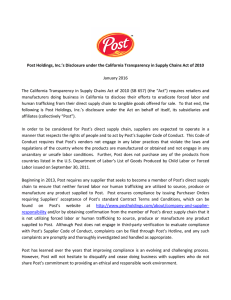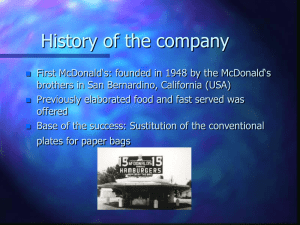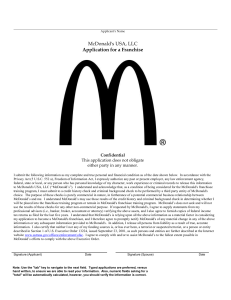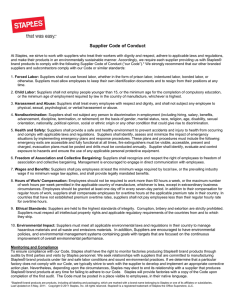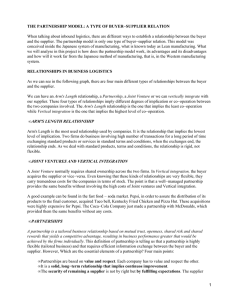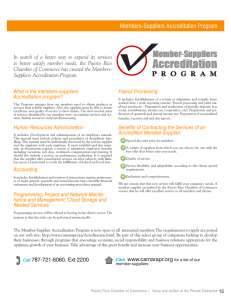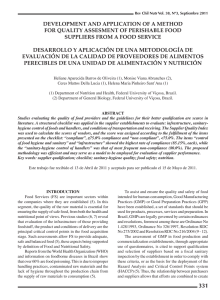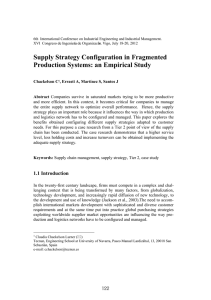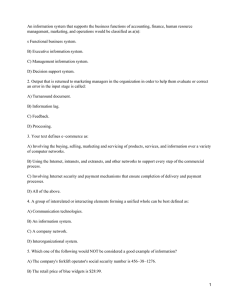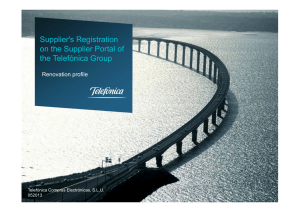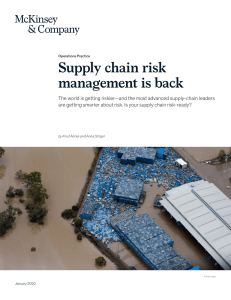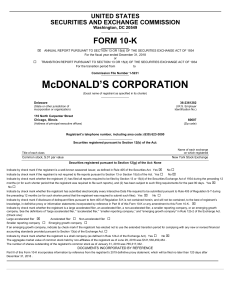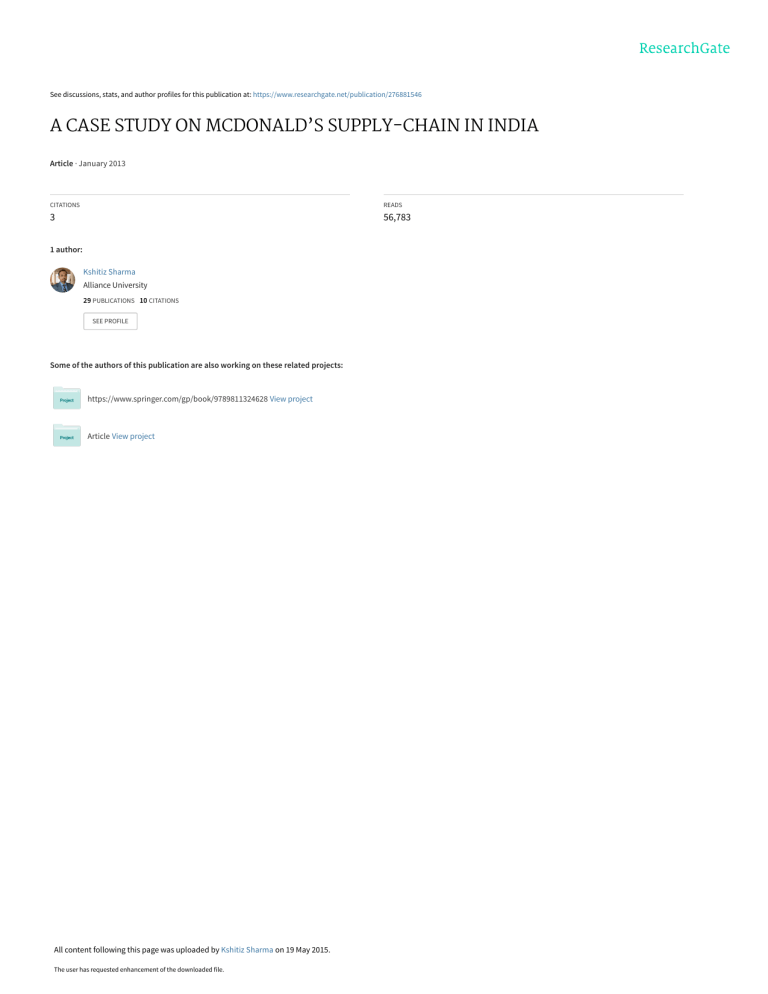
See discussions, stats, and author profiles for this publication at: https://www.researchgate.net/publication/276881546 A CASE STUDY ON MCDONALD’S SUPPLY-CHAIN IN INDIA Article · January 2013 CITATIONS READS 3 56,783 1 author: Kshitiz Sharma Alliance University 29 PUBLICATIONS 10 CITATIONS SEE PROFILE Some of the authors of this publication are also working on these related projects: https://www.springer.com/gp/book/9789811324628 View project Article View project All content following this page was uploaded by Kshitiz Sharma on 19 May 2015. The user has requested enhancement of the downloaded file. Asia Pacific Journal of Marketing & Management Review__________________________________________ ISSN 2319-2836 Vol.2 (1), January (2013) Online available at indianresearchjournals.com A CASE STUDY ON MCDONALD’S SUPPLY-CHAIN IN INDIA KSHITIZ SHARMA Assistant Professor at Alliance School of Business, Bengaluru _____________________________________________________________________________________ ABSTRACT McDonald‟s is the world leader in QSR. Their presence in 118 countries with 33,000 restaurants glorifies its position as world leader and as fast food giant. This huge network is not easy to manage where guest expectations are clean, hygienic, tasty and quick food every time. The credit of this successful availability goes to the unique supply chain management and control over this entire huge network. McDonald‟s is present in more than 40 cities of India with 250 eating outlets and adding more every now and then. This huge supply chain is entirely outsourced without any legal contact with them. Some unique features of this supply chain managements are lean management, multi-layered supply-chain, cold chain, Hub and Spoke system. For training their staff company takes all its measure through intensive programmes like Supplier Quality Management Systems (SQMS) and the Distributor Quality Maintenance Program (DQMP). The explained model will help to understand the flow of supply chain. KEYWORDS: multi-layered supply-chain, cold chain, Hub and Spoke, SQMS, DQMP _____________________________________________________________________________________ INTRODUCTION McDonald‟s is a limited menu restaurant is characterised by speed of operations. McDonald‟s is the world leading retailer with more than 33,000 restaurants in 118 countries serving more than 67 million customers each day. In India, the first outlets of the chain threw open their doors to the public in Delhi and Mumbai in 1996 within one month of each other. McDonald‟s is present in 40 Indian cities with 250 restaurants and serves 650,000 customers daily. THE FOOD RETAIL INDUSTRY Internationally, no doubt McDonald‟s is considered the largest food service retailer in the world. The first restaurant was established in 1955 in Des Plaines, Illinois, USA. It emerged in Indian territory in 1996 eyeing the informal dining-out industry in India which is estimated at $74 billion a year. The fast food industry in India is estimated to be $12-$14 THE INTRICATE SUPPLY-CHAIN The strength of McDonald‟s India employees amounts 9,000 people including restaurant staff. But the surprise lies in its unique and intricate supply chain network which is managed by just five people across the whole country. Including the Quality Assurance people, this figure rises to just eight people who are all responsible for its efficient supply chain Indian territory. 112 Asia Pacific Journal of Marketing & Management Review__________________________________________ ISSN 2319-2836 Vol.2 (1), January (2013) Online available at indianresearchjournals.com SUI GENERIS NETWORK The supply-chain network of McDonald‟s is of its own kinds: 100 percent outsourced Lean with no back-up staff and no frills. The company is enjoying growth of 30-40 percent every year in India. The credit goes to the proper research work done before launching McDonald‟s in India. The experts set together and coordinatedgroundwork was done to ensure the successful functioning of its demand and supply system. It was from 1990 onwards, expert teams happened to be in India to check the strength of India‟s logistics industry, the reliability of its transport sector, and resource availability. The result was an extremely effective supply-chain at optimal level in place despite of India‟s weak infrastructure. In context to Indian market special menus with religious and cultural sentiments were designed and in six years time the company was ready with its entire supply chain. McDonald‟s which is known for its beef burgers free of beef and pork in Indian subcontinent. MULTI-LAYERED SUPPLY-CHAIN The McDonald‟s supply chain is both critical and multi-layered. There are two categories in food ingredients supply; Tier-I and Tier-2 suppliers as reflected from figure 1. In Tier-I there are 14 core suppliers-provide processed products e.g. Vegetable and chicken patties comes from Vista Processed foods Pvt Ltd. , French fries, potato wedges and hashbrowns by McCain Foods India Pvt. Ltd. And so on. In Tier-2 suppliers there are growers and processors who provide lettuce and potato, poultry items and coating systems that are used for coating the chicken and vegetable patties. The flow of ingredients are from Tier-2 to Tier-I suppliers who process them. Now, the fleet of refrigerated trucks transport these processed foods to the company‟s Distribution Centers(DC‟s). These trucks have been specifically maneuvered for variability of McDonald‟s products. These are Multi-temperature and single temperature trucks into practice where 250 McDonald‟s Indian restaurants are provided on time fast delivery. This is not unidirectional, it also include the significant aspect of return logistics. Hence the empty bottles and racks are available for further processing. Plastic crates are used for buns to ensure their quality. With four Distribution Centers across the country all 250 restaurants are served effectively. And every new outlet addition is capably handled by these DCs within in ten days in the country. The Noida and Mumbai DCs are primary Distribution Centers owned by the company. The other two Distribution Centers are in Bengaluru and Kolkata are housed in leased properties. The system that is used to manage link between Restaurant and DCs is a hub-and-spoke model where the DCs act as hubs. McDonald‟s transportation has been completely outsourced and since 80 percent is refrigerated truck movement, the company has a dedicated fleet which transports their goods. 113 Asia Pacific Journal of Marketing & Management Review__________________________________________ ISSN 2319-2836 Vol.2 (1), January (2013) Online available at indianresearchjournals.com McDonald Supply Chain in India Figure-1 Distribution Partner (no legal agreement) McDonald‟s India Hardcastle Restaurants Private Limited Connaught Plaza Restaurants Private Ltd McDonald exhibit control over suppliers without any signed contract Tier 2 Supplier 40 suppliers- provide Lettuce, Vegetables, Potato, Poultry Farms, coating for vegetables& Patties, Dynamix Group, Mrs. Bectorsetc. Tier1 Supplier 14 core suppliers-provide processedproducts e.g. Vegetable and chicken patties comes from Vista Processed foods Pvt Ltd. ,French fries, potato wedges and hashbrowns by McCain Foods India Pvt. Ltd. RADHAKRISHNA FOODLAND PVT. LTD. (DISTRIBUTOR PARTNER) DC1 DCs (Distributio n Centre) DC2 Noida PRIMARY Mumbai DC3 Bengaluru Secondary DC4 Kolkata 114 Asia Pacific Journal of Marketing & Management Review__________________________________________ ISSN 2319-2836 Vol.2 (1), January (2013) Online available at indianresearchjournals.com PULL-SUPPLY Chain System Requisition Order Restaurant to DC, DC to Supplier Beverage PartnerCoke HUB & SPOKE System McDonald exhibits control over DCs: KPAs R-Restaurant Administration Efficiency, cases managed per man hour, warehouse efficiency, overtime, cases handled per trip, truck utilization. HACCP (Direct supply to Restaurants) and production takes place. Figure-2 115 Asia Pacific Journal of Marketing & Management Review__________________________________________ ISSN 2319-2836 Vol.2 (1), January (2013) Online available at indianresearchjournals.com 116 Asia Pacific Journal of Marketing & Management Review__________________________________________ ISSN 2319-2836 Vol.1 (4), December (2012) Online available at indianresearchjournals.com OUTSOURCED BUSINESS The essence of the effective supply-chain model is undoubtedly attributed to its unique concept of outsourcing. The company has a 100 percent outsourced supply chain, which is a rare case in industry giants. But McDonald‟s has complete control over its functioning. The performances of outsourced companies are monitored on Key Performance Indicators (KPIs). The figure highlights the suppleness of its supply-chain under three principles to which the company adheres unwaveringly, the principles of trust and collaboration between the brand, the owners or operators, and the suppliers. McDonald‟s has a total of 40 suppliers, in which 14 are the core suppliers, known as Tier-1 suppliers, they supply directly to the fast food chain. Table 1 Tier-I Suppliers Cheese Dynamix Dairy Industries Ltd., Pune Dehydrated onions Jain Foods, Jalgaon Iceberg lettuce Trikaya Agriculture, Pune Chicken patty Vista Foods, Taloja Veg. Patty, Veg. nuggets, Pineapple/Apple pie Kitran Foods, Taloja Chicken (dressed) Riverdale, Talegaon Buns Cremica Industries, Phillaur Eggless mayonnaise Quaker Cremica Pvt. Ltd., Phillaur Sesame seeds Ghaziabad Iceberg lettuce MeenaAgritech, Delhi Fish fillet patties Amalgam Foods Ltd., Kochi. Iceberg lettuce Ooty Farms & Orchards, Ooty Vegetables for the patties Mutton and mutton patties Finns Frozen Foods & Jain Foods (Nasik, Jalgaon) Al Kabeer, Hyderabad Source: Business India, October 4, 1999. The rest are Tier-2 suppliers. Relying on local players, most of the suppliers are local. Some internationally famous foreign players like McCain Foods India are also the part of supply team. McCain set up its Indian business when McDonald‟s ventured into the fast food business in the country. 117 Asia Pacific Journal of Marketing & Management Review__________________________________________ ISSN 2319-2836 Vol.1 (4), December (2012) Online available at indianresearchjournals.com For supplier to remain in the main stream, the terms of work are very rigorous. It‟s a whole lot of responsibility with qualitative assurance lies on suppliers. A company‟s stellar credentials are not enough; the supplier‟s job does not end when the product leaves his premises, rather it ends only when the customer consumes it. McDonald‟s expects its suppliers to personally ensure the quality of their products to skirt the risk factor. Coca Cola, the beverage partner impart water management knowledge to the restaurant staff to ensure potable quality of drinking water. FAITH IS THE KEY McDonald‟s has no legally signed agreements with its suppliers. It is a simple „handshake relationship‟ with the suppliers. The policy with suppliers is very clear; one product-one supplier relationship. The policy has been proven as long-term relationships at every time.” The fast food chain sells 30 or 35 independent Stock Keeping Units (SKUs) at its outlets. With various combinations (a meal can be small, medium or large, while a Coke can also be sold as regular, medium or large), there are 100-150 SKUs which are sold to customers. Limited SKUs,have ensured speedy service and ease to maintain stock keeping. The major demand (80%) is fulfilled by 14 core suppliers and whenever addition is there in restaurant line those 14 suppliers are the first choice. SOLE DISTRIBUTION PARTNER The entire distribution of McDonalds‟ products in India is handled by Radhakrishna Foodland Pvt. Ltd, the only distribution partner. RKFL manages the four DCs and since it has a transport division, handles the truck movement in the supply-chain right through the country (Figure-2). McDonald‟s exhibits control on its distribution partner to meet its standards of „cold, clean and on-time delivery ‟. RKFLexpertsmanages daily activities of raising purchase orders to suppliers, invoicing, keeping track on working capital management, timely delivery, payments, etc. Any item required, is sourced directly from RK. There are only two products, buns and Cokes, which are sent directly to the restaurants. Buns have a limited shelf life, hence they are sent directly to the outlets. Coca Cola has its own distribution system which ensures quick dispatch of its products. As with its suppliers, McDonald‟s has no legally documented Service Level Agreements (SLAs) with RKFL. For distribution partner also McDonald‟s has set KPIs (Key Performance Indicators). The DCs are assessed on several factors like administration efficiency the total number of cases managed per man hour, warehouse efficiency, overtime as a percentage of the total number of hours worked and in the case of transportation, the number of cases handled per trip, truck utilization, etc. 118 Asia Pacific Journal of Marketing & Management Review__________________________________________ ISSN 2319-2836 Vol.1 (4), December (2012) Online available at indianresearchjournals.com REFRIGERATED MOVEMENT OF PRODUCTS The movement of edible goods is through a system of cold chain where fleets of truck transport all the items, capable to carry different items all together as there are compartments created to store frozen products at -180C to -250C, chilled products from 10C-40C and dry products at ambient temperatures. Another feature is that truck containers are made with two side doors in addition to the rear door. The side doors are used to unload products without disturbing the products in the other temperature zones. The entire effectiveness of supply-chain is based on the concept of „pull-supply‟ chain. The restaurant issues orders to the Distribution Center which, in turn, routes the order to the supplier and only then does the supplier produce it. The concept is also known as “made to order”. The supplier thus maintains barely any extra stocks; only if there is a contingency, like the overhaul or servicing of machinery, will the supplier produce surplus stocks. According to RK Foodland, the fill rate to store is 99.8 percent. DEMAND FORECASTING: 31Q SYSTEM Demand forecasting for long term is based on an efficient concept known as 31Q system—3 stands for the three years that the fast food chain will keep checking its plans, 1 represents the detailed forecast of the next year and Q symbolizes the quarterly monitoring of these forecasts. While preparing annual budgetsuppliers becomes a part of budgeting process. Usually, the restaurants give a three-day to one-week forecast to the Distribution Center. The DC, in turn, has a three-month rolling forecast with the suppliers which enable them to plan their production schedules meticulously. With 250 restaurants scattered across the country, lead times for delivery assume critical importance.Every restaurant manager knows the exact time of arrival of each product which enables the supply chain team to work backwards to ensure timely distribution.With a maximum inventory of ten days in its system, McDonald‟s maintains an efficient inventory turn ratio of 36. FOOD SAFETY & HACCP Food safety is another critical area for quality standard. For this Hazard Analysis Critical Control Point (HACCP) certification which ensures food quality is applicable. This is an industry level certification and is applicable on all the suppliers of the fast food chain. Apart from HACCP, there areother food safety systems like the Supplier Quality Management Systems (SQMS) and the Distributor Quality Maintenance Program (DQMP) are also in practice. For processing and manufacturing plants SQMS is applicable.The SQMS is a worldwide mandate for all McDonalds‟ suppliers and includes essentials of the HACCP control system, while also contriving several principles of its own. The DQMS audits and checks the warehouses of the chain. Auditors worldwide are also trained on its SQMS and DQMP programs. Independent auditors then audit plants and warehouses and allot scores to McDonalds‟ facilities globally to ensure highest standards. QUALITY ASSURANCE Taste of the food products is another parameter of Quality. For this McDonald‟s has developed a Sensory Program. The centralized laboratory for this program is located in Hong Kong which 119 Asia Pacific Journal of Marketing & Management Review__________________________________________ ISSN 2319-2836 Vol.1 (4), December (2012) Online available at indianresearchjournals.com prepares sensory experts. These personnel come both from the suppliers‟ and Quality Assurance teams. Every batch of a food product that gets manufactured at a supplier‟s plant is checked by an approved sensory panel at the plant and scores are allotted to the product. Only a product with minimum score is shipped out of the factory. Other measures are also taken in the form of at random checks of outlets. Also, every quarter or half year, members of the management do a „product cutting‟ with key suppliers—fry a product, check its taste and allot scores—to check if the product scores are moving in the right direction northwards. And lastly, samples of the products that are manufactured in the country are shipped to the central laboratory at Hong Kong which evaluates the products. TECHNOLOGY AT ITS BEST The entire system of supply chain is powered by technology to make it smooth and effortless. Suppliers are using SAP while Distribution Centers are on RAMCO Marshall ERP with Cobra software. These systems are used to automized upload of store orders. For assisting in day to day functions of store, technologies have been developed e.g. track sales, enables restaurants to schedule staff and send forecast orders to DCs, etc. The company is tapping the high growth opportunities with customer satisfaction criteria effectively and in this effort McDonald‟s added Mcdelivery, an innovative option which delivers meals to the customer‟s doorstep. This service has grown at stratospheric levels by more than 400 percent. Mcdelivery was first launched in Mumbai and Delhi in 2004. CONCLUSION McDonald‟s Supply Chain is quite uniquely handled with least number of employees on McDonald‟s payroll. The control on outsourced entities is commendable. With ever growing business of fast food McDonald‟s has laid down its systems efficiently and expanding at enormous speed. The model can be replicated in other sectors as well. REFERENCES: 1. http://www.mcdonalds.com/us/en/our_story.html 2. http://www.mcdonaldsindia.com/aboutus.html 3. http://www.food-service-europe.com/trendscout/hottrends/pages/ 4. http://www.icmrindia.org/free%20resources/casestudies/McDonald%20food%20ch ain.htm 5. http://sourcing3.com/blog/mcdonalds-india-supply-chain/3/ 6. http://logistics.bafree.net/mcdonalds-india-supply-chain/ 120 View publication stats
